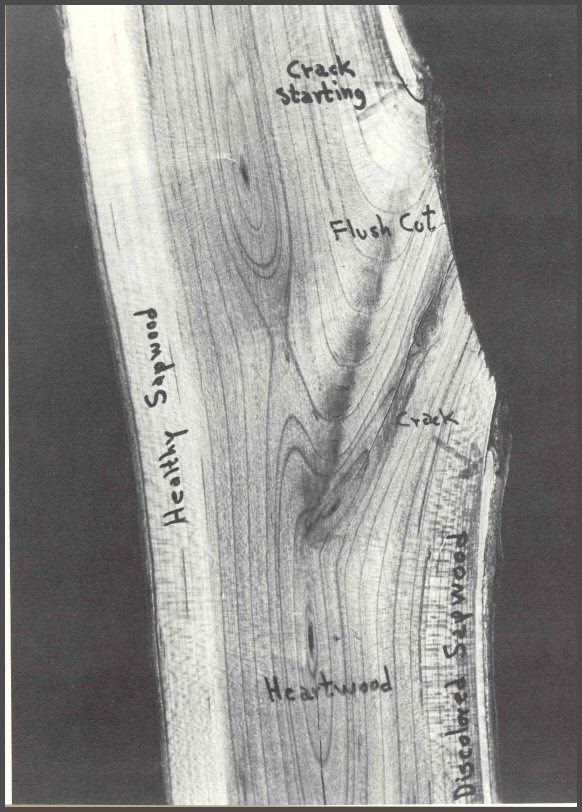
Page 152-167
102. One growing season after improper cutting of a living branch on a black cherry. Note discolored band of sapwood on flush cut side. Only a thin band of sapwood is above and below the cut. The discolored sapwood reduces the volume of wood that stores energy reserves. The single growth ring of sound sapwood may easily crack or split from sudden cold or sudden heat-frost cracks" or "sunscald". Insects often infest the thin band of tissue. Canker-causing fungi often infect the weakened tissues around such cuts. Cracks may also form as Wall 4 forms. All because of a flush cut!

Pages 152-153
103. Proper cut of a red oak branch after 50 years. Closure was complete. The brown rot that was in the branch at the time of pruning was still walled off within the branch.
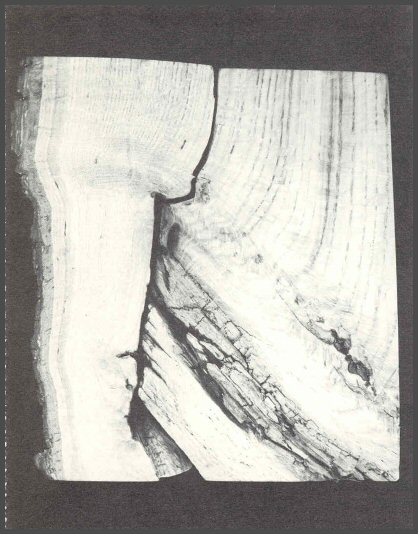
104. Improper cut of a red oak branch after 30 years. Closure looked complete, but the crack was still open, and made conditions perfect for the decay-causing fungi. Decay was advanced in the wood present at the time of the harsh flush cut. Insects infested the dying tissues surrounding the cut, in spite of the coating of wound dressing on the surface of the cut. Such cuts cause serious injury.
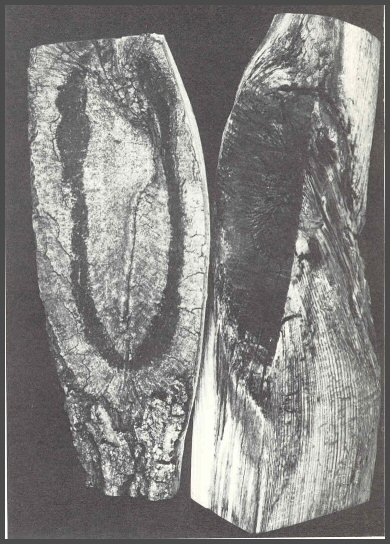
Pages 154-155
105. Summary of proper and improper pruning: The three samples are rubber models all made from the same section of paper birch. The model at right shows a living branch cut too long (left), and a dead branch cut too long (right). The center model shows proper pruning of a living and dead branch. The model on the left shows improper (too close) pruning: live branch (left): dead branch (right).
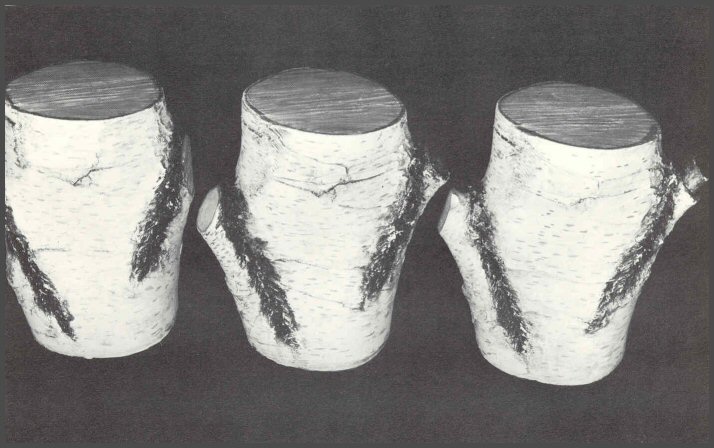
Pages 156-157
106. When it is necessary to cut off the leader of a tree and have a branch develop as a new leader, the old leader should not be cut flat across the stem. This type of "flat-top" cut will start decay rapidly. The proper cut is on the left; the flat-top cut is on the right. Both red maple trees were the same age. Note the complete ring of callus on the left sample. When a top cut must be made, start on the inner side of the branch bark ridge, opposite where you start when removing a branch. The cut should be slanted at approximately the angle of the branch that will be the new leader, which will also be fairly close to the angle of the branch bark ridge.
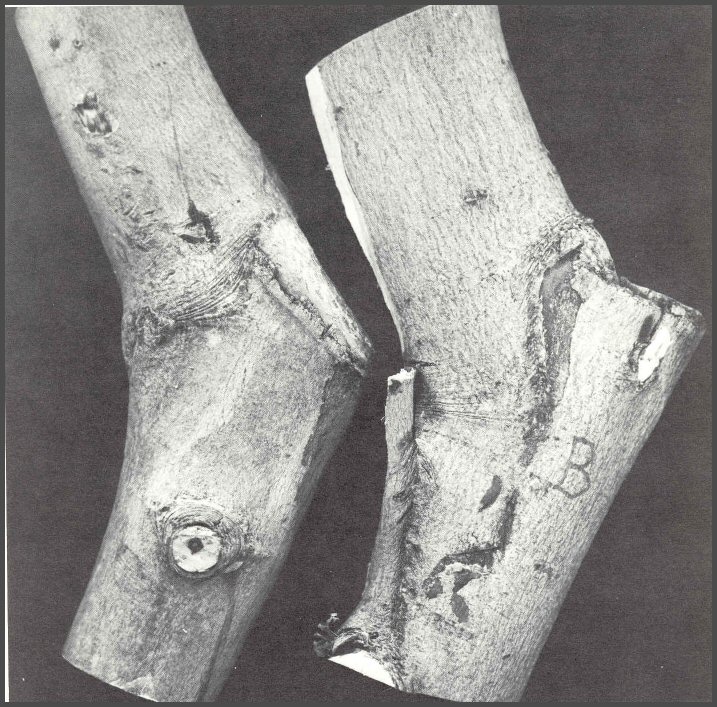
Pages 158-159
107. Dissection of the red maple samples shown in the previous figure; proper top cut on left, improper cut on right, after 3 years. When a top cut is made, it causes serious injury no matter how it is done. But the degree of injury can be greatly reduced by starting on the inner side of the BBR, and slanting the cut approximately at the angle of the BBR. The word "approximately" is used here because it is difficult to determine the exact angle of cut due to the bends in the branches. But flat- top cuts should never be made. Why? The stub of wood that remains will be dying wood, and microorganisms spread most rapidly in dying wood. The stub will be alive, but defenseless, just like a branch stub. The tree walls off the cut where the end of the original cut should be made. The angle of the proper cut was determined from dissections of flat-top cuts, as shown on the right. Note the large amount of decayed wood in the right sample. Flat-top cuts are causes of serious injury to orchard trees, especially species of Prunus. Ornamental cherry varieties are also very sensitive to flat-top cuts.
Topping cuts should not have too steep an angle. A steep angle cut will lead to decay above and below the cut. Improper topping cuts can lead to limb drop, as the new leader grows larger and as the decay in the old trunk develops downward.
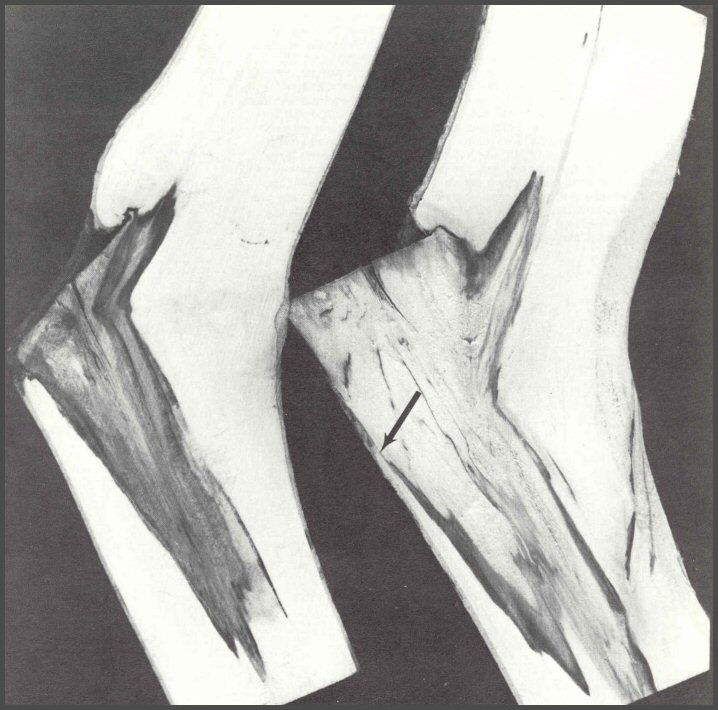
Pages 160-161
108. Many defects in wood products have their origin in the living tree. After a branch or root dies, or the tree is wounded, the tree responds by setting boundaries to resist the spread of infections. The boundaries are often the sites of cracks in wood products. Also, the injury-altered wood within the boundaries is often the first wood to be attacked by other microorganisms when it is made into a product. Insects-ants, termites-also infest first the injury-altered wood. In many cases the wood is really not defective when it goes from the tree to the wood product, but it will not last long. The many large stubs in this pole were the start of problems about 15 years after the pole was set. The wood that was altered when the branch died began to decay. The decay did not spread into the heartwood or outward to the wood that formed after the branch died. The pattern of decay was not determined by where the preservative penetrated. Cracks started from the internal decayed wood and spread outward. (Checks start from the outside and move inward.) Ants infested the decayed wood through the cracks. Woodpeckers bored many holes in the pole to eat the ants. The poles had to be replaced.
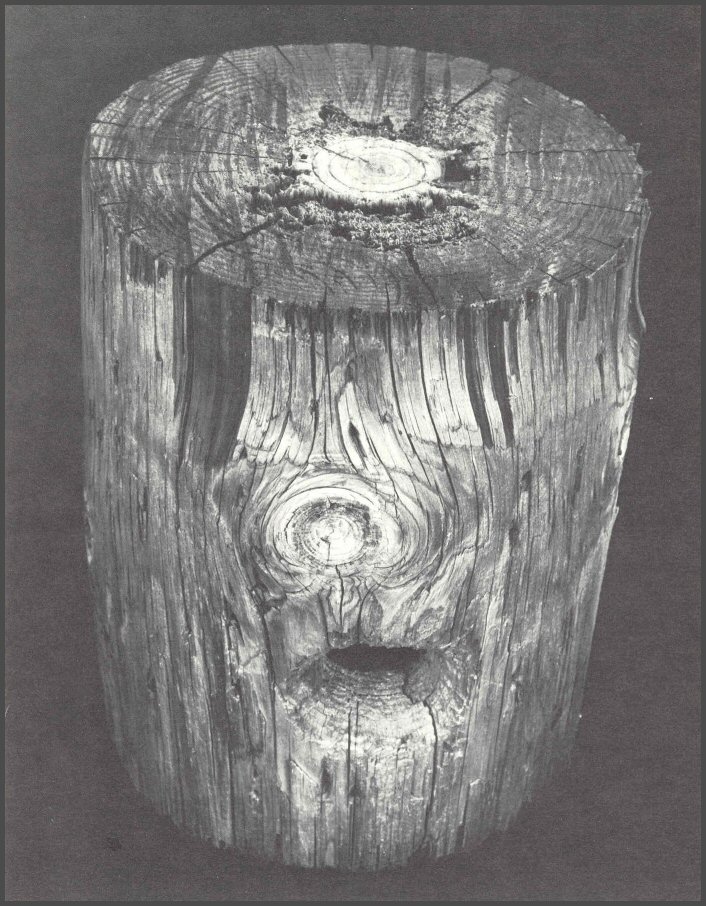
Pages 162-163
109. Dissected view of pole sample shown in previous figure. Note the column of decayed wood associated with the branch wood.
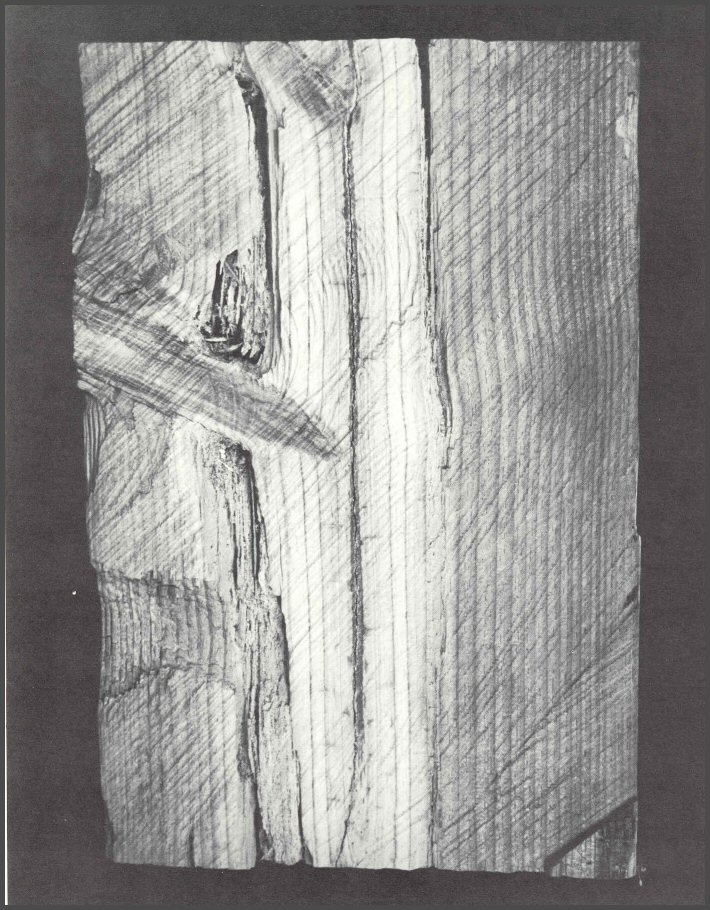
Pages 164-165
110. New electrical tools have been developed that now make it possible to detect decayed wood in living trees and in wood products. The meters register, in ohms, the resistance to a pulsed current that is generated by the meter and passed through the wood through a variety of electrodes. A skilled operator who understands wood and trees, and CODIT, can use the pattern of electrical readings to help determine the internal condition of the wood.
For experimental purposes, the meters are being used with double - needle, noninsulated electrodes to measure the resistance of the wood directly below an obvious column of brown rotted wood (above) and wood distant from the brown rotted wood (below). The meter on the left shows 20 Kohm for the upper electrode; the meter on the right shows 140 Kohms for the lower electrode. Note also how abruptly the brown rot ends.
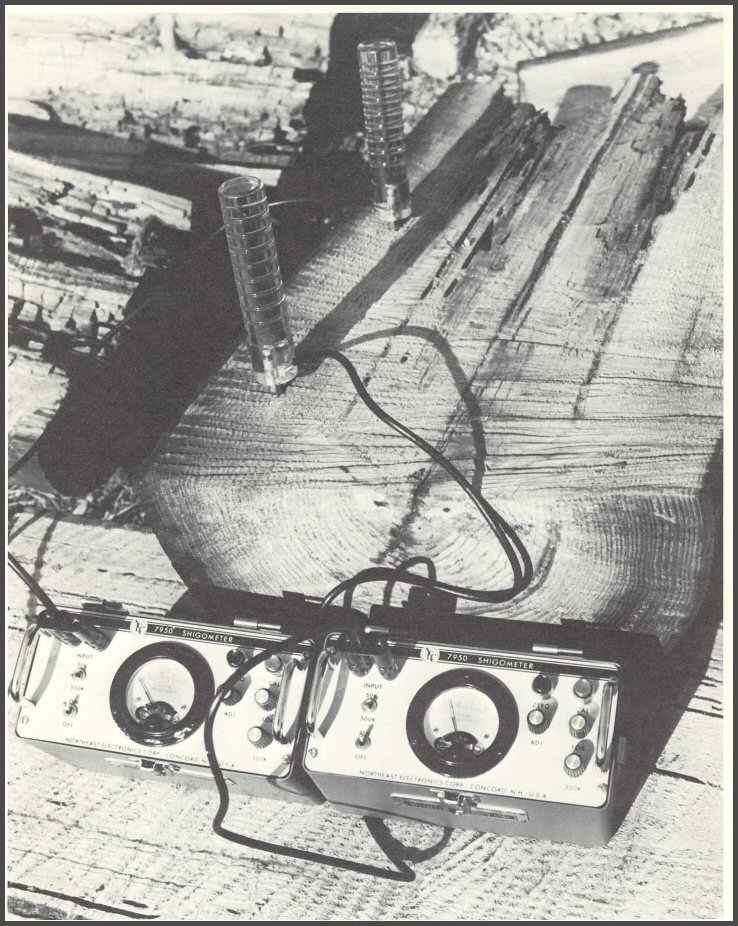
Pages 166-167
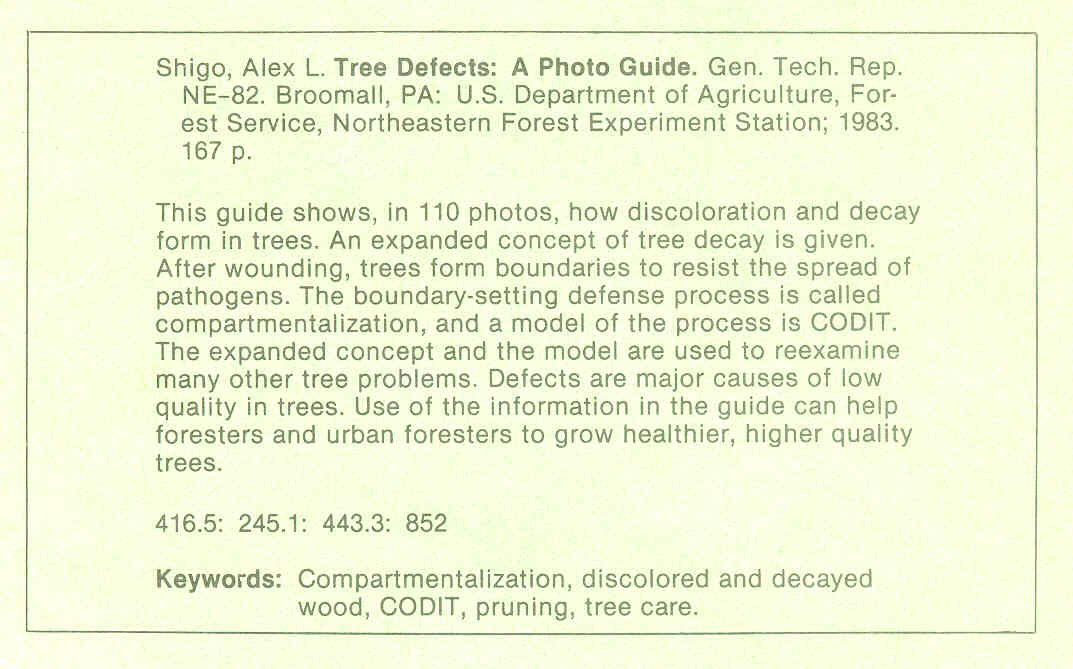

Please report problems to John A. Keslick, Jr.